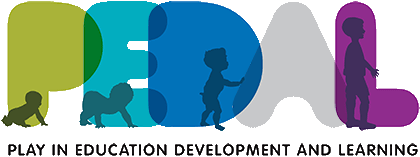Why did we do this research?
Symbolic play and language development share something similar, which is the use of “symbols”. In symbolic play, children use a wooden stick as a magic wand, role playing Harry Potter. In language, a combination of letters like ‘a-p-p-l-e’ represents a juicy fruit. Similarly, when engaging in a conversation, one has to decode the words being said to understand the other person’s intentions.
There have been studies demonstrating the links between symbolic play abilities and children’s language development. However, there is a lack of longitudinal analyses examining the same link for autistic children, who tend to play differently and hold different language profiles, compared to non-autistic children.
How did we do it?
We used a longitudinal birth cohort called Growing Up in Australia, from which we extracted a sample of 92 autistic children.
By using hierarchical regression analyses on three structural language outcomes at age 7 (i.e. semantics, syntactic and coherence skills), we tried to understand how solitary symbolic play abilities, object substitution abilities, and peer role play abilities at age 3 each contributed to these three language abilities at age 7.
What did we find?
We found that autistic children’s object substitution abilities at age 3 predicted their semantics, syntactic and coherence skills at age 7. Autistic children’s solitary symbolic play abilities at age 3 predicted their semantics and coherence skills at age 7. Autistic children’s peer role play abilities at age 3 predicted their semantics and coherence skills at age 7.
Our findings challenge several stereotypes when it comes to autistic children’s symbolic play abilities. For instance, many believe that autistic children’s playing solitarily reflects their limited social skills, but our study provides empirical evidence for the benefits of autistic children’s solitary symbolic play on developing their syntactic and coherence skills.

Journal Article
Click here to read the full paper, via SAGE Publications.
